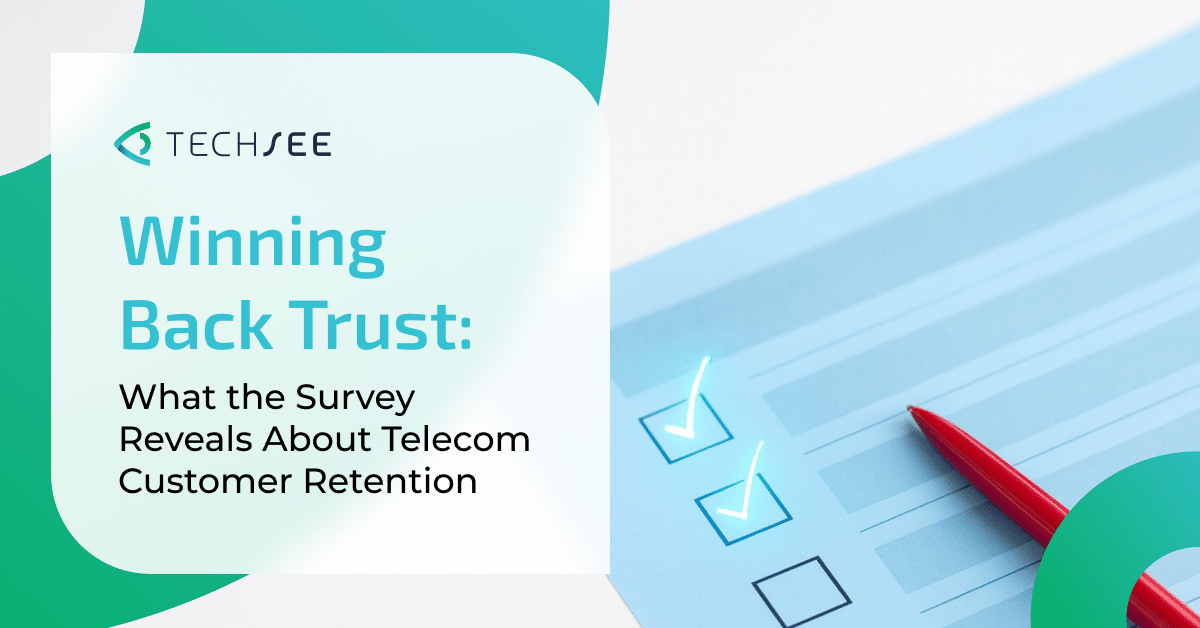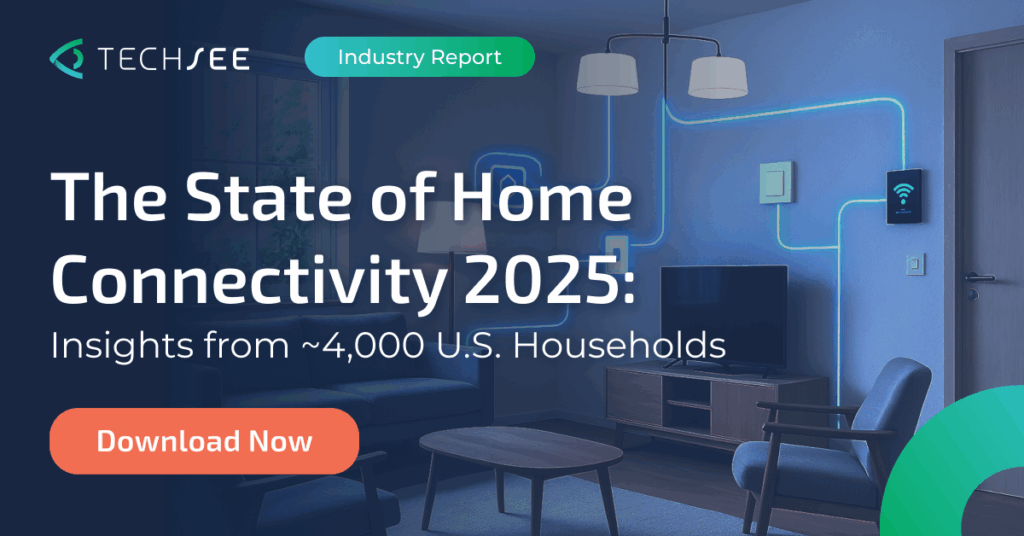Winning Back Connectivity Trust: What the Survey Reveals About Telecom Customer Retention
In the telecom industry, customer retention is the ultimate measure of trust. It costs far more to acquire a new customer than to keep an existing one. Yet churn continues to threaten the bottom line for broadband and telecom providers. TechSee’s 2025 Home Connectivity Survey of nearly 4,000 U.S. households shows that customer retention today is not about price or even advertised speed.
Instead, it is shaped by something more fundamental: the quality of the customer experience. Connectivity pains, support interactions, and proactive service all directly influence whether customers stay loyal or switch to competitors. To put this in perspective, Parks Associates found that the average U.S. household had 17 connected devices in 2023.
With so many devices relying on stable Wi-Fi, expectations for reliability are higher than ever. According to the same firm, 52% of DIY smart home users report setup or connectivity issues. It shows how frustrations with technology extend far beyond broadband service alone. In this environment, telecom customer retention depends on delivering reliability and support that matches the complexity of connected homes.
Why Connectivity Pains Drive Customers Away
TechSee’s survey makes clear that connectivity issues are still the norm. 68% of households reported Wi-Fi problems in the past year, with 18% experiencing them daily and another 20% weekly. Even premium “whole-home Wi-Fi” solutions did not close the gap, with 72% of subscribers still facing issues.
Coverage gaps were widespread, with 76% of customers reporting location-specific weak spots. Bedrooms (35%) and home offices (24%) topped the list. For households, these are the rooms where reliability matters most. For providers, these are the rooms where loyalty is lost when service fails.
The survey also found that households with 16+ devices were significantly more likely to experience issues (70%) compared with those with only 1–5 devices (58%), showing how complexity increases the risk of dissatisfaction.
When connectivity consistently underdelivers, customers look elsewhere. In the survey, 51% said they would consider switching providers if issues weren’t resolved quickly. 48% would switch if another ISP offered better whole-home coverage, and 34% said they would pay up to 10% more for reliable service. These numbers reveal an important truth: ISP customer retention strategies depend less on pricing and more on whether providers can deliver on their core promise of reliable connectivity.
The Cost of Poor Service on Retention
When customers face problems, how the provider responds often determines whether they stay or churn. The survey found that 51% of customers first try to troubleshoot issues themselves, but only 62% succeed fully. Younger customers are particularly at risk: only 48% of those aged 18–29 said they could resolve issues on their own, compared to 71% of those aged 45–60.
Despite these self-service attempts, 67% of households still contacted their ISP for support in the past year, with 21% reaching out once, 35% contacting them 2–3 times, 8% contacting 4–5 times, and 3% contacting 6 or more times.
When self-service fails, the burden shifts to ISPs. Two-thirds of households contacted their provider at least once in the past year, and 39% had a technician dispatched. But 20% of those visits failed to fix the issue, leaving customers frustrated and more likely to churn.
Drilling deeper, 31% of households said their issue was resolved after the first technician visit, while 8% reported that it remained unresolved, highlighting the need for better first-time resolution.
Poor resolution rates and repeat calls aren’t just costly; they directly damage retention. Customers who spend hours on hold or endure multiple technician visits are the ones most likely to explore alternatives.
Expectations Have Shifted: Proactivity Is the New Loyalty Driver
Perhaps the most striking survey finding is that today’s customers want their provider to anticipate problems rather than simply react.
- 73% said they would trust their ISP more if it proactively helped them fix Wi-Fi issues.
- 76% expect providers to flag coverage gaps during installation, and 77% expect technicians to demonstrate that the entire home is connected before leaving.
- 56% said they would purchase additional equipment if given clear, evidence-based recommendations.
These expectations highlight a shift. Retention is no longer about responding quickly to problems. It is about proactive service in telecom, showing transparency at every step, and equipping customers with solutions that feel personalized.
The Role of Visual Assistance in Retention
The survey also reveals that customers are open to tools that make troubleshooting simpler. 66% said they would use a Wi-Fi mapping app to visualize coverage, and 69% said step-by-step visual guidance would help them avoid calling support.
This appetite for visual assistance is critical to retention. It shows that customers don’t want to be told what to do; they want to see what to do. Visual diagnostics, interactive mapping, and guided self-service give households confidence that problems are solvable, while reducing the support burden on providers.
Connected Homes, Higher Expectations
The findings fit into a bigger industry story. As Parks Associates reported, U.S. homes now average 17 connected devices. This explosive growth puts enormous pressure on networks and amplifies frustration when service fails. At the same time, more than half of DIY smart home users report setup or connectivity issues, adding another layer of dissatisfaction.
Together, these data points show why broadband customer expectations have become harder to meet. Customers are living in complex digital ecosystems. When providers fail to support them, whether during installation or everyday use, loyalty evaporates quickly.
What Telecom Providers Can Do to Protect Retention
The survey and external data point to clear strategies:
- Focus on reliability, not just speed.- Loyalty is built when service is stable across every room, not when maximum advertised speeds look good on paper.
- Be proactive, not reactive. – Customers expect coverage gaps to be identified and demonstrated at installation, with follow-up support that feels preventive.
- Invest in visual assistance. – By giving customers tools to see their connectivity issues and guided steps to fix them, providers can reduce frustration and boost trust.
- Close the loop on support.- Technician visits must resolve issues the first time. Anything less drives churn.
- Acknowledge the connected home reality. With an average of 17 devices per household, providers should frame their support strategy around the needs of increasingly complex digital ecosystems.
Conclusion
Telecom customer retention is no longer secured by price or speed alone. Survey shows that connectivity issues, weak support, and lack of proactive service are the top telecom churn drivers. They are the top reasons customers switch providers.
To win customer loyalty in telecom, providers must meet customers where they are: in homes packed with connected devices, where expectations for reliability and transparency are higher than ever. By focusing on proactive service, visual assistance, and dependable resolution, providers can turn a major retention risk into a competitive advantage.
Download the full TechSee Home Connectivity Survey report to see the complete dataset and learn how to protect retention in an era of rising expectations.
FAQs
Q1: What are the main reasons customers leave telecom providers?
TechSee’s survey found that 51% would switch if issues weren’t resolved quickly, 48% would switch for better coverage, and 34% would even pay more for reliable service.
Q2: How does the connected home impact retention?
With an average of 17 devices per household (Parks Associates), expectations for reliability are rising. Any coverage gap or instability is amplified when multiple devices rely on stable Wi-Fi.
Q3: Do customers want proactive service?
Yes. 73% said they would trust their ISP more if it proactively helped fix Wi-Fi issues, and 76% expect providers to flag coverage gaps at installation.
Q4: How can visual assistance help retention in telecoms?
69% of households said step-by-step visual guidance would help them avoid calling support. Visual diagnostics make connectivity issues visible and solvable, which builds trust.
Q5: How do smart home devices impact broadband customer experience?
52% of DIY smart home users encounter setup or connectivity problems, showing that frustrations extend beyond broadband. Supporting these scenarios through smarter ISP customer retention strategies is essential to keep households satisfied..







